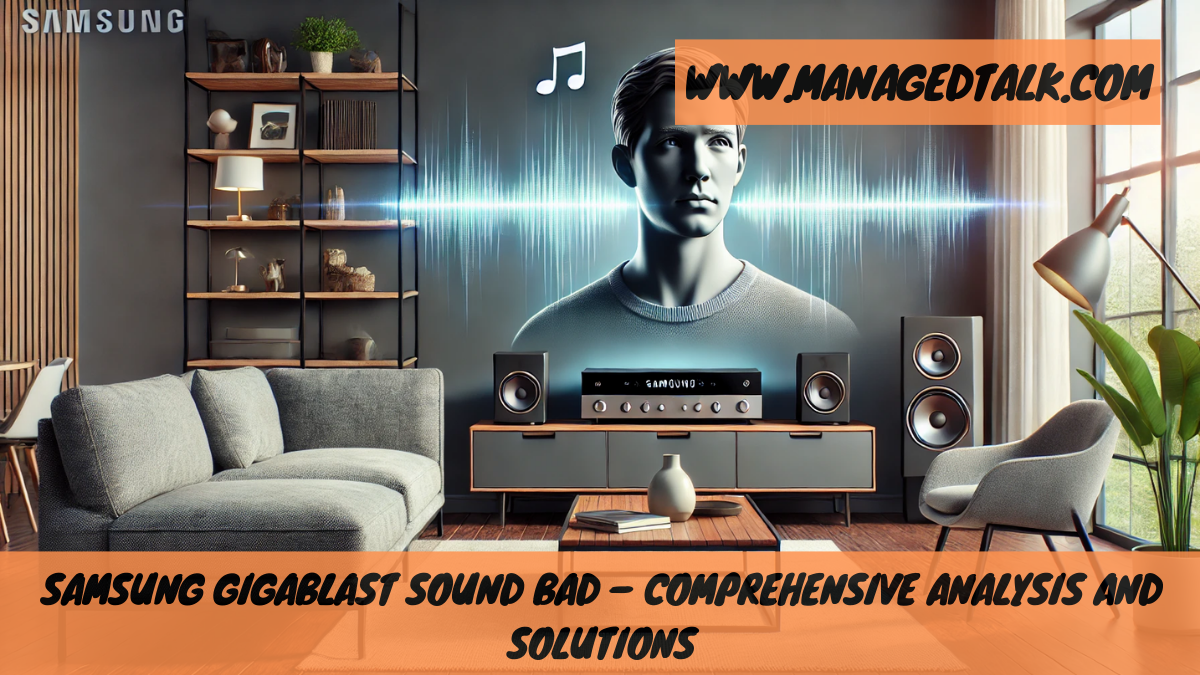Introduction
The Samsung Gigablast sound system promises top-tier audio performance, aiming to redefine home entertainment with immersive sound and cutting-edge technology. However, some users report mixed experiences, voicing concerns about suboptimal audio quality and inconsistent performance.
The Samsung Gigablast sound system often receives mixed reviews for its performance, with users highlighting issues like subpar audio quality and inconsistent bass, affecting overall listening satisfaction.
This article explores why the Samsung Gigablast sound system might not meet expectations, delving into detailed analyses and solutions for a better user experience.
1. Overview of the Samsung Gigablast Sound System
The Samsung Gigablast was designed to offer users an unparalleled audio experience, marketed with features like:
- High-definition sound: Promising crisp and clear audio.
- Powerful bass technology: Aiming to create a theater-like atmosphere.
- Wireless connectivity: Integrating seamlessly with smart home devices.
Despite its feature-rich design, certain aspects have led to disappointment among users, contributing to the belief that the Samsung Gigablast sound is bad.
2. Common Complaints About the Samsung Gigablast Sound
2.1 Sound Quality Issues
Many users report that the audio lacks depth and clarity, especially when played at high volumes. Issues include:
- Muddy sound reproduction: Instruments and vocals sometimes blend, losing definition.
- Uneven sound levels: Inconsistent audio balance between highs, mids, and lows.
2.2 Bass Performance Concerns
The bass, while marketed as powerful, has been criticized for being either overpowering or insufficiently present, depending on the listening mode and environment. This inconsistency affects genres of music that rely heavily on low-frequency sounds.
2.3 Connectivity and Latency Problems
Some users find that connecting the system to wireless devices leads to occasional latency issues, disrupting movie or music playback. This lag can be frustrating, especially during critical moments in media consumption.
3. Potential Reasons Behind the “Samsung Gigablast Sound Bad” Perception
3.1 Speaker Tuning and Calibration
The factory settings on many audio devices may not be optimized for all types of content. The Gigablast’s default settings may cater to certain genres while underperforming with others.
- Limited customization options: Users may struggle to find settings that suit diverse media types.
- Lack of auto-calibration: Competing systems often include built-in technology to adapt audio output based on the room’s acoustics.
3.2 Room Acoustics and Placement
Many consumers may not realize how much the room’s layout and acoustics impact sound quality. Poor placement of the Samsung Gigablast sound system could lead to:
- Reverberation issues: Hard surfaces reflect sound differently, causing distortion.
- Diminished bass effect: Large, open spaces may dilute the system’s bass response.
4. In-Depth Analysis: Why Users Find the Samsung Gigablast Sound Bad
4.1 Engineering and Hardware Constraints
While Samsung boasts robust build quality, certain hardware limitations can affect sound delivery:
- Speaker driver quality: Mid-tier materials may not perform as well as premium alternatives.
- Amplifier power: Inadequate amplifier capacity can lead to distortion when playing at high volumes.
4.2 Software and Firmware Limitations
The sound system’s software plays a significant role in audio processing. Users frequently report that outdated or under-optimized firmware versions contribute to:
- Audio lags and disruptions: Outdated software may struggle to sync with streaming devices.
- Subpar sound profiles: Ineffective equalizer presets that fail to bring out the best audio experience.
5. Solutions to Improve the Samsung Gigablast Sound Experience
5.1 Optimizing Audio Settings
Adjusting the built-in equalizer and experimenting with custom sound profiles can significantly improve the listening experience. Suggested adjustments:
- Reduce bass levels in smaller rooms to prevent overpowering vibrations.
- Enhance treble for better clarity in vocals and instrumentals.
5.2 Placement and Room Setup Tips
To get the best audio quality, consider:
- Positioning the system at ear level for direct sound delivery.
- Avoiding corners where sound waves can create an echo effect.
5.3 Regular Software Updates
Ensuring that the device runs on the latest firmware can address latency and sound processing issues. Regular updates often contain:
- Bug fixes and optimizations: Improving connectivity and response times.
- New sound modes: Tailored for various content types.
6. Comparing the Samsung Gigablast with Competitors
6.1 Head-to-Head with Popular Alternatives
To understand why “Samsung Gigablast sound bad” complaints arise, it helps to compare the system with similar products:
- Bose Soundbars: Known for clear, balanced audio but at a higher price point.
- Sony HT-Series: Offers better bass consistency due to its dedicated subwoofer technology.
7. Real User Experiences and Reviews
A comprehensive look at user feedback reveals common themes:
- Satisfaction for casual use: Many are content with everyday audio needs.
- Discontent among audiophiles: Those with refined listening expectations find it lacking.
8. FAQs About the Samsung Gigablast Sound System
Q1: Can software updates improve the sound quality?
A1: Yes, regular software updates can improve sound processing and connectivity, enhancing overall performance.
Q2: How can I optimize my Samsung Gigablast for better sound?
A2: Customizing equalizer settings and positioning the system properly can dramatically improve sound output.
Q3: Is there an external device that can enhance the Gigablast’s performance?
A3: Yes, adding a dedicated subwoofer or sound processor can balance out audio inconsistencies.
Conclusion
While the Samsung Gigablast sound system offers impressive features on paper, the experience may fall short due to various factors, from sound engineering to room acoustics. By understanding these limitations and employing the suggested solutions, users can optimize their sound system for a better audio experience. Ultimately, whether or not the Samsung Gigablast sound is bad depends on user expectations, preferences, and environmental factors.
